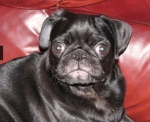Time spent with oxygen saturation (SaO2) < 90% (T90)
Time spent with oxygen saturation (SaO2) < 90% (T90)
Hello,
New to the forum. Just received home sleep study results.
Mild OSA is reported, but I am most interested in your thoughts on the 84 minutes with oxygen saturation < 90%. Seems like a lot of time!
Redacted results below. Thank you for any perspective you may share!
New to the forum. Just received home sleep study results.
Mild OSA is reported, but I am most interested in your thoughts on the 84 minutes with oxygen saturation < 90%. Seems like a lot of time!
Redacted results below. Thank you for any perspective you may share!
_________________
| Machine: ResMed AirSense™ 10 AutoSet™ CPAP Machine with HumidAir™ Heated Humidifier |
| Mask: ResMed AirFit™ F20 Full Face CPAP Mask with Headgear |
-
littlebuddha
- Posts: 6
- Joined: Tue Nov 12, 2019 11:22 pm
Re: Time spent with oxygen saturation (SaO2) < 90% (T90)
It's bad. You need to get treated to prevent your oxygen from going that low.
Re: Time spent with oxygen saturation (SaO2) < 90% (T90)
You should see your doctor about adding night O2.
_________________
| Machine: ResMed AirSense™ 10 AutoSet™ CPAP Machine with HumidAir™ Heated Humidifier |
| Mask: Fisher & Paykel Vitera Full Face Mask with Headgear (S, M, or L Cushion) |
| Additional Comments: Back up is S9 Autoset...... |
Re: Time spent with oxygen saturation (SaO2) < 90% (T90)
Do follow up with your doctor about these O2 levels.
While OSA is a known cause of oxygen desaturations....this prolonged level is close to earning adding O2 at night with or without the OSA diagnosis.
If OSA is the cause...then cpap should fix the problem.
If OSA isn't the cause (and there are lots of health conditions that can also cause these desats) then you want to figure out what the problem is and fix it.
Your OSA is mild and barely diagnostic and while not impossible for that to be the lone cause of the desats.....it would take some pretty prolonged events to bring down the O2 levels that much when so few are happening.
My suggestion would be to have an in lab sleep study done while using cpap/mask and machine and have them see if simply using cpap fixes the problem or not.
If that isn't possible at this time then cpap plus the use of an overnight recording pulse oximeter for sure to see where the O2 levels go.
While OSA is a known cause of oxygen desaturations....this prolonged level is close to earning adding O2 at night with or without the OSA diagnosis.
If OSA is the cause...then cpap should fix the problem.
If OSA isn't the cause (and there are lots of health conditions that can also cause these desats) then you want to figure out what the problem is and fix it.
Your OSA is mild and barely diagnostic and while not impossible for that to be the lone cause of the desats.....it would take some pretty prolonged events to bring down the O2 levels that much when so few are happening.
My suggestion would be to have an in lab sleep study done while using cpap/mask and machine and have them see if simply using cpap fixes the problem or not.
If that isn't possible at this time then cpap plus the use of an overnight recording pulse oximeter for sure to see where the O2 levels go.
_________________
| Machine: AirCurve™ 10 VAuto BiLevel Machine with HumidAir™ Heated Humidifier |
| Additional Comments: Mask Bleep Eclipse https://bleepsleep.com/the-eclipse/ |
I may have to RISE but I refuse to SHINE.
- raisedfist
- Posts: 1176
- Joined: Wed Jun 15, 2016 7:21 am
Re: Time spent with oxygen saturation (SaO2) < 90% (T90)
Have you already been provided an APAP? If not I'd get a prescription and acquire one as soon as possible. You shouldn't need a lab titration, and right now because of covid-19 all the labs I know are not doing titrations (only diagnostics) due to the "aeresolation" effect that using a vented mask brings.
I would take steps to fix the OSA component first, and then record your oxygen saturation again for several nights of sleep and see what improvements if any there. If you still have oxygen desaturation problems after fixing the OSA then I would show the new pulse oximeter recordings and ask if you need supplemental oxygen bled in at night.
I would take steps to fix the OSA component first, and then record your oxygen saturation again for several nights of sleep and see what improvements if any there. If you still have oxygen desaturation problems after fixing the OSA then I would show the new pulse oximeter recordings and ask if you need supplemental oxygen bled in at night.
Philips Respironics Trilogy 100
AVAPS-AE Mode
PS Min 6, PS Max 18, EPAP Min 4, EPAP Max 12
AVAPS-AE Mode
PS Min 6, PS Max 18, EPAP Min 4, EPAP Max 12
- chunkyfrog
- Posts: 34545
- Joined: Mon Jul 12, 2010 5:10 pm
- Location: Nowhere special--this year in particular.
Re: Time spent with oxygen saturation (SaO2) < 90% (T90)
I would imagine Covid to be reason enough to get rid of plain cpaps
and especially bricks--PERMANENTLY.
Titration studies were useful before the invention of auto-adjusting machines--
now, not so much, if at all!
and especially bricks--PERMANENTLY.
Titration studies were useful before the invention of auto-adjusting machines--
now, not so much, if at all!
_________________
| Mask: AirFit™ P10 For Her Nasal Pillow CPAP Mask with Headgear |
| Additional Comments: Airsense 10 Autoset for Her |
Re: Time spent with oxygen saturation (SaO2) < 90% (T90)
Thank you everyone!
This home sleep study was my first sleep study. My primary care provider ordered it. He is in the process of prescribing xPAP and is referring me to a sleep lab as well.
My significant other has really obvious OSA due to an unusually large tongue, Asian ethnicity, and a general body type that makes him prone to it. He's been on xPAP for a little over a year (after a failed pillar procedure) and LOVES it.
Central apnea? Upper airway resistance?
It's likely I have some brain stem damage (explained next paragraph), so could this be central apnea or upper airway resistance? Unsure if the home sleep study could have reported any central events since the equipment used was just the nasal cannula, pulse ox on my finger, and chest belt to detect respiratory effort. I shouldn't have any problem getting oxygen out of the air since my lungs are totally healthy. I do have a difficult time inhaling through my nose even while awake. It's like sipping air through a tiny straw that constantly wants to collapse on itself. I previously had a deviated septum repair and have just started looking into the nasal valve procedures or any other options that may be appropriate for me. I experience some benefit from BreatheRight strips.
Brain stem issues:
I have a connective tissue disorder called Ehlers-Danlos that caused the ligaments holding my skull on my spine to fail, resulting in brain stem compression due to my skull settling. I had a cervical fusion to address this about 18 months ago, which seems to have alleviated the pressure on my brain stem since the majority of my pre-surgery symptoms have improved tremendously, but there are some lingering effects.
Seems like even if it is central, that an xPAP could help? That the rhythm of the airflow could stimulate my body to breathe?
Again, thank you everyone for your thoughts! Much appreciated.
This home sleep study was my first sleep study. My primary care provider ordered it. He is in the process of prescribing xPAP and is referring me to a sleep lab as well.
Pugsy, this is exactly what I was wondering. Thank you.Your OSA is mild and barely diagnostic and while not impossible for that to be the lone cause of the desats.....it would take some pretty prolonged events to bring down the O2 levels that much when so few are happening.
My significant other has really obvious OSA due to an unusually large tongue, Asian ethnicity, and a general body type that makes him prone to it. He's been on xPAP for a little over a year (after a failed pillar procedure) and LOVES it.
Central apnea? Upper airway resistance?
It's likely I have some brain stem damage (explained next paragraph), so could this be central apnea or upper airway resistance? Unsure if the home sleep study could have reported any central events since the equipment used was just the nasal cannula, pulse ox on my finger, and chest belt to detect respiratory effort. I shouldn't have any problem getting oxygen out of the air since my lungs are totally healthy. I do have a difficult time inhaling through my nose even while awake. It's like sipping air through a tiny straw that constantly wants to collapse on itself. I previously had a deviated septum repair and have just started looking into the nasal valve procedures or any other options that may be appropriate for me. I experience some benefit from BreatheRight strips.
Brain stem issues:
I have a connective tissue disorder called Ehlers-Danlos that caused the ligaments holding my skull on my spine to fail, resulting in brain stem compression due to my skull settling. I had a cervical fusion to address this about 18 months ago, which seems to have alleviated the pressure on my brain stem since the majority of my pre-surgery symptoms have improved tremendously, but there are some lingering effects.
Seems like even if it is central, that an xPAP could help? That the rhythm of the airflow could stimulate my body to breathe?
Again, thank you everyone for your thoughts! Much appreciated.
_________________
| Machine: ResMed AirSense™ 10 AutoSet™ CPAP Machine with HumidAir™ Heated Humidifier |
| Mask: ResMed AirFit™ F20 Full Face CPAP Mask with Headgear |
-
anadybella
- Posts: 5
- Joined: Wed May 20, 2020 8:23 am
Re: Time spent with oxygen saturation (SaO2) < 90% (T90)
Go to the doctor.....
- Miss Emerita
- Posts: 3732
- Joined: Sun Nov 04, 2018 8:07 pm
Re: Time spent with oxygen saturation (SaO2) < 90% (T90)
Your sleep study report has a line for CAs, and it shows zero. I do feel your highest priority should be to address the O2 situation. Give your primary care physician the desat information from the sleep study and ask for follow-up and referrals.
_________________
| Machine: AirCurve™ 10 VAuto BiLevel Machine with HumidAir™ Heated Humidifier |
| Mask: Bleep DreamPort CPAP Mask Solution |
Oscar software is available at https://www.sleepfiles.com/OSCAR/
Re: Time spent with oxygen saturation (SaO2) < 90% (T90)
I'm wondering if the "unclassified apneas" in my sleep study report actually indicate central apneas. Since the equipment did record a couple of OSAs, I assume the respiratory effort detection sensor was working correctly.Miss Emerita wrote: ↑Wed May 27, 2020 10:52 amYour sleep study report has a line for CAs, and it shows zero. I do feel your highest priority should be to address the O2 situation. Give your primary care physician the desat information from the sleep study and ask for follow-up and referrals.
From the ApneaLink equipment manual at https://airview.resmed.com/resources/we ... lo_eng.pdf:
An apnea occurring without corresponding respiratory effort is a central apnea, right? Or is there more nuance?Note: Apnea differentiation only is available if the effort signal has been recorded. If none or insufficient effort information is available ApneaLink Air scores corresponding apneas as unclassified apneas.
_________________
| Machine: ResMed AirSense™ 10 AutoSet™ CPAP Machine with HumidAir™ Heated Humidifier |
| Mask: ResMed AirFit™ F20 Full Face CPAP Mask with Headgear |
- Miss Emerita
- Posts: 3732
- Joined: Sun Nov 04, 2018 8:07 pm
Re: Time spent with oxygen saturation (SaO2) < 90% (T90)
The unidentified events could be central or could be obstructive. But it doesn't matter: none of your events, of whatever kind, can account for your O2 desats, as Pugsy mentioned. That's why people are urging you to take this up with your physician.
_________________
| Machine: AirCurve™ 10 VAuto BiLevel Machine with HumidAir™ Heated Humidifier |
| Mask: Bleep DreamPort CPAP Mask Solution |
Oscar software is available at https://www.sleepfiles.com/OSCAR/
Re: Time spent with oxygen saturation (SaO2) < 90% (T90)
Got it. Thank you.Miss Emerita wrote: ↑Wed May 27, 2020 4:10 pmThe unidentified events could be central or could be obstructive. But it doesn't matter: none of your events, of whatever kind, can account for your O2 desats, as Pugsy mentioned. That's why people are urging you to take this up with your physician.
Please rest assured, I am working closely with my physician. I tried to convey that above. Currently in the process of scheduling with the xPAP equipment dealer. I should be able to include treatment info in my signature soon and hopefully complete an in-lab sleep study shortly thereafter.
I appreciate the perspective all of you have shared in the meantime. Navigating the medical system takes time, and a community like this certainly makes waiting for things to unfold more pleasant.
_________________
| Machine: ResMed AirSense™ 10 AutoSet™ CPAP Machine with HumidAir™ Heated Humidifier |
| Mask: ResMed AirFit™ F20 Full Face CPAP Mask with Headgear |
Re: Time spent with oxygen saturation (SaO2) < 90% (T90)
The chest belt thing gives us a clue if central apneas happened.
Obstructive apneas....there is an effort to breathe and measured by the chest belt.
Central apneas...there is NO effort to breathe and the absence of a recorded effort in the face of an apnea being flagged would then in turn point to a central apnea instead of obstructive apnea.
If you had not used the chest belt thing then that would have told me there was no way to differentiate between central and obstructive....but you had the belt.
If you didn't have any centrals flagged...it's because you didn't have any.
It's extremely unlikely that you have some sort of central apnea going on.
Obstructive apneas....there is an effort to breathe and measured by the chest belt.
Central apneas...there is NO effort to breathe and the absence of a recorded effort in the face of an apnea being flagged would then in turn point to a central apnea instead of obstructive apnea.
If you had not used the chest belt thing then that would have told me there was no way to differentiate between central and obstructive....but you had the belt.
If you didn't have any centrals flagged...it's because you didn't have any.
It's extremely unlikely that you have some sort of central apnea going on.
_________________
| Machine: AirCurve™ 10 VAuto BiLevel Machine with HumidAir™ Heated Humidifier |
| Additional Comments: Mask Bleep Eclipse https://bleepsleep.com/the-eclipse/ |
I may have to RISE but I refuse to SHINE.
Re: Time spent with oxygen saturation (SaO2) < 90% (T90)
Ok, great. That's reassuring.
My insurance gave prior authorization today so should be able to start some type of treatment soon.
_________________
| Machine: ResMed AirSense™ 10 AutoSet™ CPAP Machine with HumidAir™ Heated Humidifier |
| Mask: ResMed AirFit™ F20 Full Face CPAP Mask with Headgear |
Re: Time spent with oxygen saturation (SaO2) < 90% (T90)
I'm scheduled with a respiratory therapist at the DME tomorrow. Will be set up with a machine and should be able to start using it tomorrow night.
Anything I should know before the first appointment? Strategies to make the most of it? Questions to ask them? Requests to make regarding equipment? How hard is it to get set up for ongoing pulse ox monitoring?
If I get started on a regular CPAP will it be harder to switch to a different type of machine later on? If so, I can ask my PCP to submit a more specific prescription and wait a little while longer to get started. Right now the prior auth says, "E0601 - Continuous positive airway pressure (cpap) device".
In contrast, my significant other has already had in-lab sleep studies and the prior auth from his sleep doc says "E0471 - Respiratory assist device, bi-level pressure capability, with back-up rate feature, used with noninvasive interface, e.g., nasal or facial mask (intermit,tent assist device with continuous positive airway pressure device)". He has a ResMed AirCurve 10 ASV.
Thank you!
Anything I should know before the first appointment? Strategies to make the most of it? Questions to ask them? Requests to make regarding equipment? How hard is it to get set up for ongoing pulse ox monitoring?
If I get started on a regular CPAP will it be harder to switch to a different type of machine later on? If so, I can ask my PCP to submit a more specific prescription and wait a little while longer to get started. Right now the prior auth says, "E0601 - Continuous positive airway pressure (cpap) device".
In contrast, my significant other has already had in-lab sleep studies and the prior auth from his sleep doc says "E0471 - Respiratory assist device, bi-level pressure capability, with back-up rate feature, used with noninvasive interface, e.g., nasal or facial mask (intermit,tent assist device with continuous positive airway pressure device)". He has a ResMed AirCurve 10 ASV.
Thank you!
_________________
| Machine: ResMed AirSense™ 10 AutoSet™ CPAP Machine with HumidAir™ Heated Humidifier |
| Mask: ResMed AirFit™ F20 Full Face CPAP Mask with Headgear |











